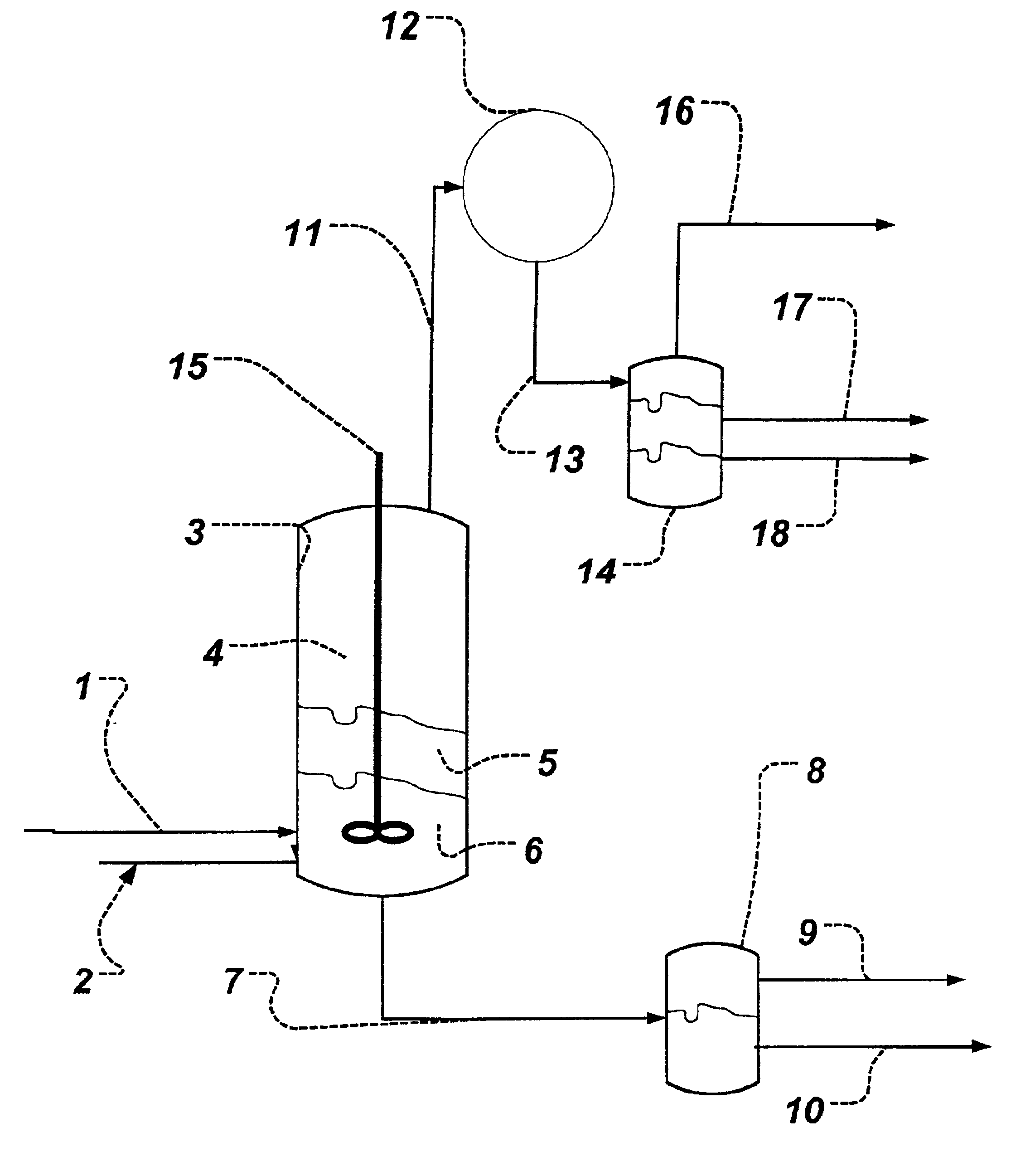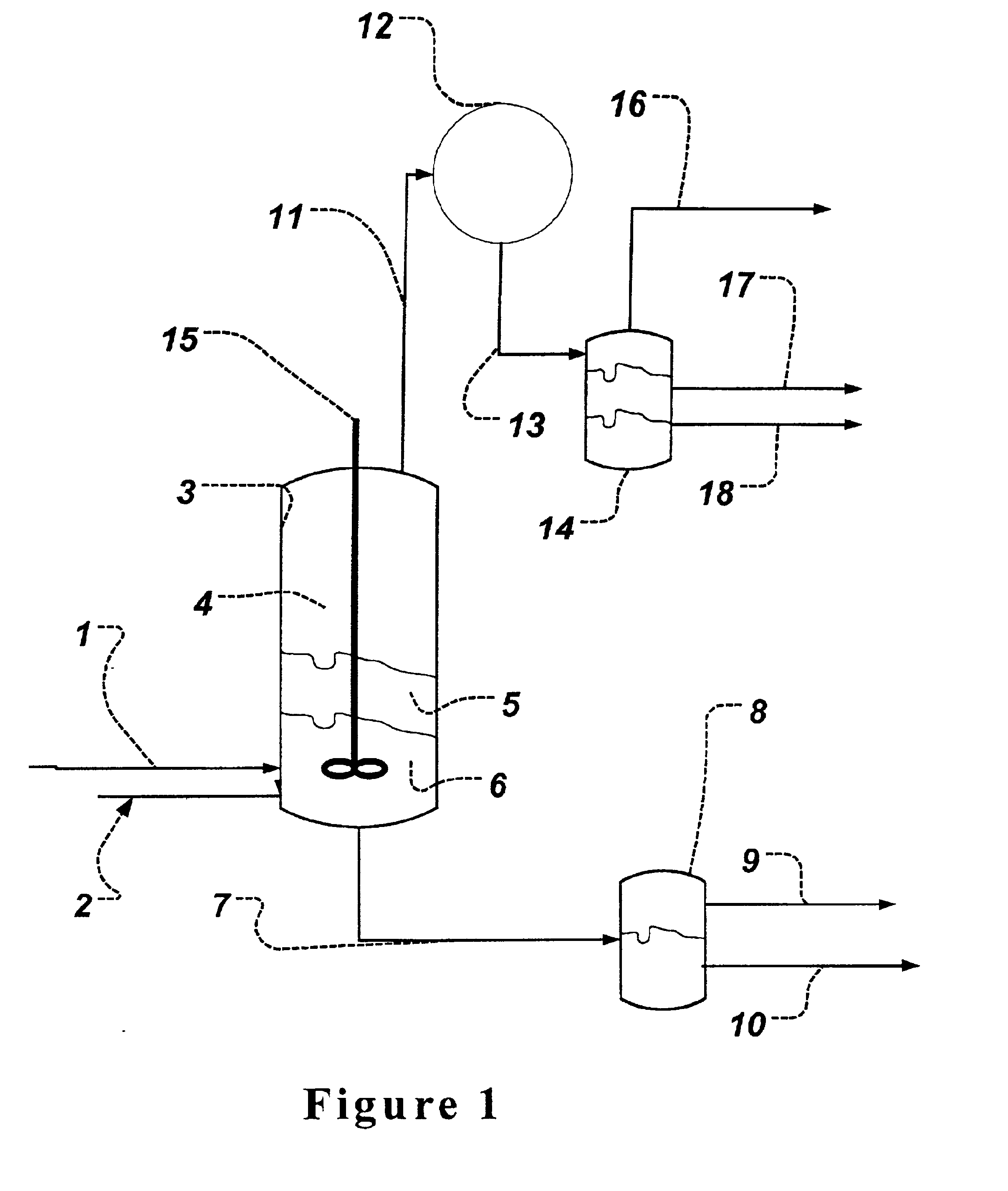Azeotropic distillation process for producing organic acids or organic acid amides
a technology of organic acids and distillates, applied in the field of azeotropic distillates for producing organic acids or organic acid amides, can solve the problems of difficult chemical synthesis to prepare a higher proportion of a particular optical isomer, unsatisfactory color, and interference with downstream processing, so as to increase the recovery and purity of organic acids.
- Summary
- Abstract
- Description
- Claims
- Application Information
AI Technical Summary
Benefits of technology
Problems solved by technology
Method used
Image
Examples
example 1
Recovery of Lactamide and Lactic Acid from a Feed Stream Comprising Lactic Acid and Four Impurities Using diethylbenzene as an Azeotroping Agent in a One Day Batch Process without Reflux
[0078]A 250 ml three neck flask with a stirrer was charged with reagents. The system pressure was −25.6 inches Hg gauge. The overhead vapor was drawn to a condenser and condensate receiver. There was little or no reflux. The typical liquid temperature during the run was 108° C. The vapor immediately above the liquid was 104° C. The vapor at the top of the head prior to entering the condenser was 100° C.
[0079]The following table shows the initial pot charge amounts. This was a batch distillation, so there were no continuous feeds.
[0080]
Componentgrams88% Lactic acid in55.9waterDiethylbenzene81.2Glucose1.0Succinic acid1.0Glycine1.2Glycerol1.0Water7.1
[0081]Thirteen overhead condensate samples (“OV1” to “OV13”) were collected. The samples consisted of a light phase (e.g. comprising the diethylbenzene, aze...
example 2
Recovery of Lactic Acid from a Feed Stream Comprising Lactic Acid Using dodecane as an Azeotroping Agent in a One Day Batch Process without Reflux
[0085]A 250 ml three neck flask with a stirrer was charged with reagents. The initial batch charge was 50.0 grams of 98% 1-dodecane and 40.0 grams of 88% lactic acid in water. The system was heated under vacuum, and the system pressure was −25.4 inches Hg gauge. The overhead vapor was drawn to a condenser and condensate receiver. There was little or no reflux. The typical liquid temperature during the run rose from 120° C. to 138° C. The temperature of the vapor immediately above the liquid rose from 120° C. to 130° C. during the run. The vapor temperature at the top of the head prior to entering the condenser was 124° C.
[0086]Seven overhead condensate samples (“OV”) were collected. The samples consisted of a light phase (comprising the azeotroping agent) and a heavy phase (comprising the recovered lactic acid). The phases were separated a...
example 3
Recovery of Lactic Acid from a Feed Stream Comprising Lactic Acid Using diethylbenzene as an Azeotroping Agent in a One Day Continuous Process without Reflux
[0090]A 250 ml three neck flask with a stirrer was charged with reagents. The system pressure was −25.7 inches Hg gauge. The overhead vapor was drawn to a condenser and condensate receiver. There was little or no reflux. The typical liquid temperature during the run was 105° C. The vapor immediately above the liquid was 102° C. The vapor at the top of the head prior to entering the condenser was 99° C.
[0091]There was an initial batch charge of 43.7 grams pure diethylbenzene. The system was heated under vacuum until condensate flow just started and then the continuous feeds were started.
[0092]The continuous feeds were made at the following average rates: pure diethylbenzene 84 grams per 6 hours and 50% lactic acid in water 14 grams per 6 hours.
[0093]One overhead condensate sample (“OV”) was collected. The sample consisted of a li...
PUM
| Property | Measurement | Unit |
|---|---|---|
| boiling point | aaaaa | aaaaa |
| boiling point | aaaaa | aaaaa |
| boiling point | aaaaa | aaaaa |
Abstract
Description
Claims
Application Information
 Login to View More
Login to View More - R&D
- Intellectual Property
- Life Sciences
- Materials
- Tech Scout
- Unparalleled Data Quality
- Higher Quality Content
- 60% Fewer Hallucinations
Browse by: Latest US Patents, China's latest patents, Technical Efficacy Thesaurus, Application Domain, Technology Topic, Popular Technical Reports.
© 2025 PatSnap. All rights reserved.Legal|Privacy policy|Modern Slavery Act Transparency Statement|Sitemap|About US| Contact US: help@patsnap.com



